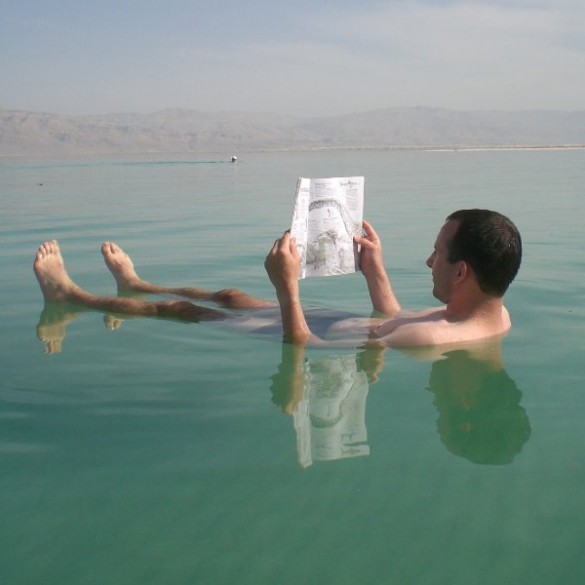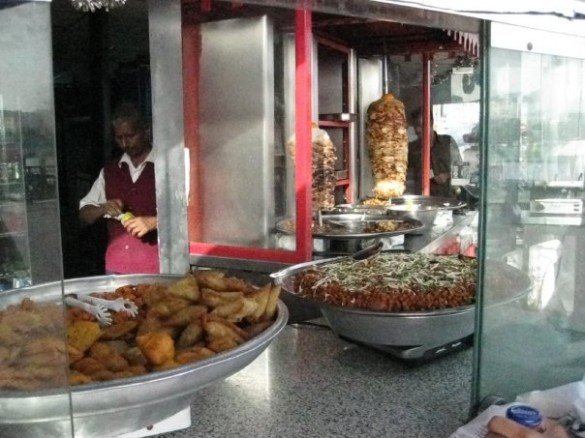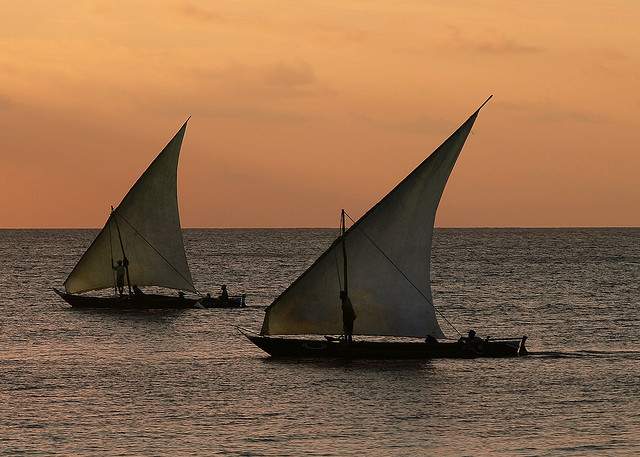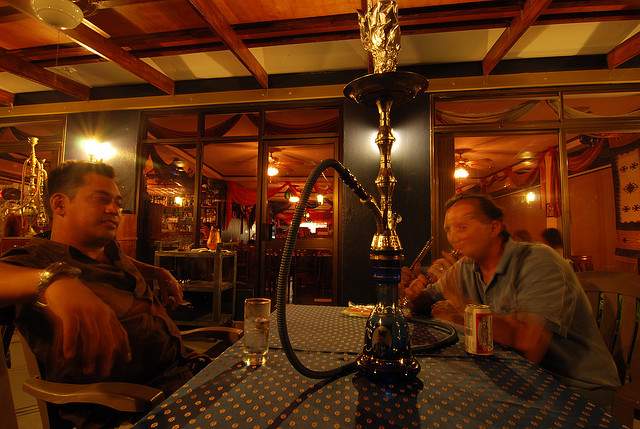There is no doubt the Middle East certainly has its share of instability, but life resumes as normal and there is so much more than meets the eye. The Cradle of Civilisation is how it’s referred, and rightfully so. Every part of this region dates back to the beginning of man and the result is today’s richness in culture, passion and kinship. Definitely not for the close-minded, its contrasting beauty, hospitality and ever-present sunshine will make you succumb to the notion that this part of the world is like anywhere else. Set the stereotypes aside as you plan your next holiday and venture out to one of many Middle Eastern locales. To get you going, listed are ten awesome things about the Middle East.
1. Dipping in the Dead Sea

Entering from Port Aqaba in Jordon or Ein Gedi in Israel, the murky waters of the Dead Sea is 1,388 ft below sea level making it the lowest point on earth’s dry surface. Also the saltiest body of water in the world, the inhospitable environment makes it impossible for any kind of flora or fauna to flourish, hence its name. With 33% saline, the water is incredibly dense but taking a float in its silky wetness does wonders for your skin. Not to mention the pure fun-factor of buoyancy. Be sure to avoid contact with your eyes and rinse thoroughly in one of several showers, beachside, to avoid ruining your favourite swimwear – the salt here can eat right through it.
2. Skiing and Surfing in the Same Day
Perhaps one of the most ironic ways to spend your vacation. If you’re a fan of both winter and summer sports, then plan a visit to Beirut, Lebanon or Dubai, UAE to take advantage of this contrasting possibility. Faraya-Mzaar Resort, in Lebanon, sits within one of the largest mountains in the Middle East, offering a variety of slopes for advanced skiers and beginners alike. During the prime months of February or March spend an afternoon skiing Mount Lebanon’s downy snow followed by a frolic in the sand on one of many beaches in Beirut, only an hour’s drive away. If Lebanon’s not your niche then try the UAE’s Ski Dubai, the world’s largest indoor ski hill. Filled with real flakes, this 85 meter high dome offers five different runs on three ft of snow, at a cool -2 degrees. Once you hand in your rental gear, head off to the popular Jumeirah Beach only a ten minute drive away.
3. Standing on a Man-made Island
Sure we’ve all seen and heard about it but until you’re actually there, experiencing life on a man-made island is truly indescribable. Extending 919 ft into the Persian Gulf, the island is literally built from the ground up; sand dredged from the bottom of the Gulf, hardened and encircled with a large rock breakwater system, individually placed by cranes. Layer with a rail line, expressway, hundreds of villas and condos, restaurants and one of the world’s most luxurious hotels, the Atlantis, and you’ve got the Palm Jumeirah. As if one wasn’t enough, the Palm Deira and Palm Jebel Ali were also built, in addition to the man-made World, only accessible by private jet or yacht. So what’s the reason behind the palm shape, you ask? Why, to allow each villa its own private beach, of course. The epitome of luxury living, and the root of much debate, these artificial islands, with all its integrity, demonstrates innovative, forward-thinking and modernity in a world still so under-developed and conservative. A definite must-see.
4. Sailing a Dhow
If you plan to visit Muskat or Salalah in Oman, Fujairah in the UAE or Sharm el-Sheikh in Egypt, be sure to rent a dhow with a group and take a sail around the Arabian or Red Sea. This two-story, open-air, houseboat come ferry comes equipped with a plethora of cushions, perfect for relaxation. Bring aboard your own snacks and equipment and enjoy a day of diving, overnight camping or a simple sea-bound picnic. Your dhow adventure is entirely customizable and affordable. What better way to spend your vacation than sailing around golden mountain rock on cyan sea waters beneath the warm desert sun?
5. Embracing the Call to Prayer
Regardless of what your beliefs are the vociferous announcement of Islam’s call to prayer (or Adhan) from the Mosques, five times per day, is quite moving. About as loud as alarming city traffic, but with the contrasting softness of a lullaby, the city-wide call from the Muezzin will make you stop in your tracks. Literally. Regardless of where you are, it’s heard loud and clear, and those of this faith are seen pulled over to the side of the road, visiting the prayer room in the mall or taking breaks from work. Witnessing the commitment and passion from this culture is truly inspirational and being blanketed by the brief proclamation lovingly reminds you of that.
6. Discovering Real Roman Ruins
As the original rulers known for building cities and conquering people, there is no doubt the Romans influenced language, religion and law. But what stands out the most in contrast to typical Mediterranean flair are pieces of roman architecture, still in place to this day. Signature baths, broken arches, expansive amphitheatres and sky-piercing temples is only some of the evidence left to confirm their existence and power. Whether you’re walking through the Valley of the Kings in Luxor, Egypt, sitting in the Roman Amphitheatre in Jerash, Jordan, or climbing 450 meters to the Roman Masada near Eilat, Israel, you’re never unsatisfied from experiencing true, majestic, beauty found in these bona fide, open-air, museums.
7. Befriending a Bedouin
The only region in the world home to the original nomads. Although not entirely rare, the pleasure of meeting these infamous desert-dwellers can only take place off the beaten path and are most commonly found in Jordan, Syria, Sudan, or Sinai in Egypt. Said to believe they are descendents of a higher religious power, these tribes choose to lead a spiritual life without possession or of being possessed. Today’s Bedouins exist as they are born into these clans and commit to following tradition. However, with increasing populations and changing government policies, modern-day Bedouins have started to enter the work force or live in modest homes. With hearts as large as the desert itself, upon meeting one of these wadi-wanderers you can expect a hospitable welcoming of tea, shisha, and traditional folk dance or poetry.
8. Passing the Shisha
Commonly referred to by Westerners as a Hookah, puffing fruit-flavoured smoke that is first filtered through water is a popular pastime here, and a great way to unwind while on vacation. Although invented in India, its Iranian inventor introduced this custom to the Middle East and quickly spread among Arabs as an alternative means to entertainment due to alcohol prohibitions. Seen quite predominantly during business meetings, dinner events or cafes, this two ft glass bottle usually comes with two or more hoses for simultaneous sharing. If you visit the Middle East, replace a night at the bar with an evening of shisha-sharing, beachside and under the stars.
9. Indulging in Authentic Shawarma

There is something about this $0.98 fast food staple found anywhere around the Middle East that put all the street meat vendors in Canada, to shame. Slow roasted on a spit, alternate layers of fat and meat from chickens, turkeys, goats and lamb marinate all day and are freshly shaved and stuffed into a chewy pita filled with tabbouleh salad, tomato, pickles, hummus and tahini. If you’ve never tried a shawarma (or you think you have from your favourite Falafel house in North York), the strategic ingredient that can only be found when you visit the Middle East, are French fries. These skinny potato wedges, added to the inside of the shawarma, absorb the sauces, keeping the juicy flavour close to the meat and not dripping on to your lap.
10. Visiting Cave Cathedral and Garbage City
On the map it’s known as Mokattam but for the residents of Cairo, Egypt it’s known as Garbage City. A population of 50,000 Christians literally living among, and building homes made of, the city’s filth. Hills of rotting meat scraps and vegetables line the narrow streets. Stacks of garbage-filled plastic bags outline doorways. Because of the serious lack of garbage collection in Cairo, these men, women and children sift, burn, recycle and live for free among the area’s rotting trash. And they’re content. Genuine joyous smiles beam from the faces of these people as you pass through Garbage City, because what is just beyond is their reason for faith. Deeply cut into the limestone rock of Mokattam Hill is a vast, 5,000 seat cathedral depicting an array of Christian images and Arabic writing. Rock overhangs and protrudes from the cave’s walls while rows of descending wooden benches form a crescent around the Alter. The stark contrast between Cave Cathedral and what lies before it is a once-in-a-lifetime experience.
Photos by Id germain, CasadeQueso

